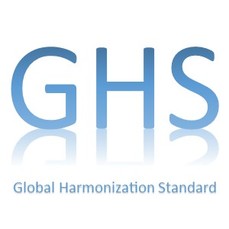|
Q: How often do we need to do Haz Com training? A: Haz com training is required:
NOTE: Some companies provide refresher training annually as a best practice. Q: Does HazCom training only cover chemical hazards? A: No. HazCom training covers any physical and health hazard in a work area. Due to labeling requirements, we tend to get conditioned to think that HazCom only applies to the chemicals in our work areas. Q: Is combustible dust a hazard that we need to train on? A: Combustible dust is identified as a physical hazard, and if present in your facility you will need to train on combustible dust hazards. Q: Do you need to keep SDSs for commercial products such as "Windex" and "White-Out"? A: OSHA does not require that SDSs be provided to purchasers of household consumer products when the products are “used in the workplace in the same manner that a consumer would use them.” [i.e.; where the duration and frequency of use (and therefore exposure) is not greater than what the typical consumer would experience]. This exemption in OSHA's regulation is based, however, “not upon the chemical manufacturer's intended use of his product, but upon how it actually is used in the workplace.” Employees who are required to work with hazardous chemicals in a manner that results in a duration and frequency of exposure greater than what a normal consumer would experience would need to be trained in those hazards. For example, if a manufacturer uses Windex to clean stainless steel panels all day long, this could be considered as a duration and frequency condition (exposure) much greater than the average home owner (consumer). As a result, companies would need to have the SDS for Windex, and train their employees on its hazards. Q: What about janitorial use of chemicals? A: Janitorial use of chemicals is not considered to be the same duration and frequency of exposure scenario as a consumer (home owner). Janitors use the chemicals during extended periods and likely have a higher exposure. Chemical SDSs used for janitorial purposes should be maintained at the facility by the employer in charge of the janitorial services. Information on interpretations of OSHA’s hazard communication standard can be found here. This month’s Q&A corner focuses on questions regarding Hazard Communication and the new Respirable Crystalline Silica standard. Hazard Communication
Q: How often do we need to do Haz Com training? A: Haz com training is required:
NOTE: Some companies provide refresher training annually as a best practice. Q: Does HazCom training only cover chemical hazards? A: No. HazCom training covers any physical and health hazard in a work area. Due to labeling requirements, we tend to get conditioned to think that HazCom only applies to the chemicals in our work areas. Q: Is combustible dust a hazard that we need to train on? A: Combustible dust is identified as a physical hazard, and if present in your facility you will need to train on combustible dust hazards. Q: Do you need to keep SDSs for commercial products such as "Windex" and "White-Out"? A: OSHA does not require that SDSs be provided to purchasers of household consumer products when the products are “used in the workplace in the same manner that a consumer would use them.” [i.e.; where the duration and frequency of use (and therefore exposure) is not greater than what the typical consumer would experience]. This exemption in OSHA's regulation is based, however, “not upon the chemical manufacturer's intended use of his product, but upon how it actually is used in the workplace.” Employees who are required to work with hazardous chemicals in a manner that results in a duration and frequency of exposure greater than what a normal consumer would experience would need to be trained in those hazards. For example, if a manufacturer uses Windex to clean stainless steel panels all day long, this could be considered as a duration and frequency condition (exposure) much greater than the average home owner (consumer). As a result, companies would need to have the SDS for Windex, and train their employees on its hazards. Q: What about janitorial use of chemicals? A: Janitorial use of chemicals is not considered to be the same duration and frequency of exposure scenario as a consumer (home owner). Janitors use the chemicals during extended periods and likely have a higher exposure. Chemical SDSs used for janitorial purposes should be maintained at the facility by the employer in charge of the janitorial services. Information on interpretations of OSHA’s hazard communication standard can be found here. Silica Q: What kinds of operations present a crystalline silica hazard? A: According to OSHA, industries and operations in which exposure to crystalline silica can occur include, but are not limited to:
Q: What is the Silica Compliance Schedule? A: The final rule took effect on June 23, 2016. Industries have 1 to 5 years to comply with most requirements, based on the following schedules:
Information on OSHA’s Silica rule can be found here.  Sarah Lindsey, Staff Scientist at Schneider Risk Management SRM & Associates LLC. In 2012, OSHA updated its Hazard Communication regulation (29 CFR 1910.1200) to align with the United Nations Globally Harmonized System of Classification and Labeling of Chemicals (GHS), Revision 3. Some deadlines have already come and gone, and there are two deadlines left that you may need to be aware of: Chemical Distributors have until December 1, 2015, to update and ship all products under the new labeling requirements, and Chemical Users / Employers have until June 1, 2016 to finalize labeling and plans. The U.S. EPA (EPA) issued an Enforcement Alert in February 2015 entitled “Anhydrous Ammonia at Refrigeration Facilities Under Scrutiny by U.S. EPA.” This Enforcement Alert notes that the EPA has gathered evidence that suggests refrigeration facilities may not be properly managing their ammonia. It states that the “Alert is intended to inform industry that companies must take responsibility to prevent accidental releases of dangerous chemicals like anhydrous ammonia through compliance with CAA’s Chemical Accident Prevention Program (40 CFR 68).”
OSHA has adopted the Global Harmonized System and revised the Hazard Communication Standard (HCS) to reflect the changes. The Final Rule was published in the Federal Register on March 26, 2012. The Effective Date of the final rule is 60 days after the date of publication.
Employers – What to Do and When?
|
|

 RSS Feed
RSS Feed
